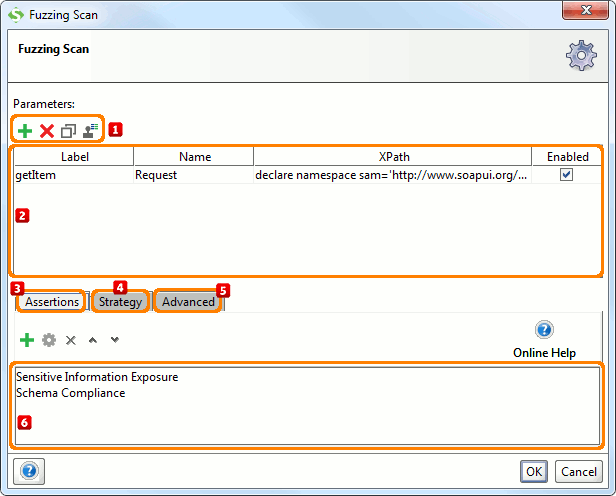Fuzz testing or Fuzzing is a Black Box software testing technique, which basically consists in finding implementation bugs usingmalformed/semi-malformed data injection in an automated fashion.
Application fuzzing, application security, application testing, web application analysis Wfuzz is a fuzzing tool written in Python. Tools like Wfuzz are typically used to test web applications and how they handle both expected as unexpected input.
A trivial example
- Writing a fuzzing tool is all well and good, but it’s not enough without proving that it’s effective in practice. I decided to test SharpFuzz on some of the most popular NuGet libraries. To be included in the initial testing batch, the library had to have more than 100K users, and it also had to do some sort of complex input parsing.
- Jul 27, 2021 Another fuzzing tool — AngryFuzzer. To download this tool, visit the following GitHub page.
- Quality assurance. Fuzz testing aims to address the infinite space problem: There are endless ways to misuse software. Defensics’ intelligent, targeted approach to fuzzing allows organizations to ensure software security without compromising product innovation, increasing time to market, or inflating operational costs.
Let’s consider an integer in a program, which stores the result of a user’s choice between 3 questions. When the user picks one, the choicewill be 0, 1 or 2. Which makes three practical cases. But what if we transmit 3, or 255 ? We can, because integers are stored a static sizevariable. If the default switch case hasn’t been implemented securely, the program may crash and lead to “classical” security issues:(un)exploitable buffer overflows, DoS, …
Fuzzing is the art of automatic bug finding, and it’s role is to find software implementation faults, and identify them if possible.

History
Fuzz testing was developed at the University of Wisconsin Madison in 1989 by Professor Barton Miller and students. Their (continued) work can be found at http://www.cs.wisc.edu/~bart/fuzz/ ; it’s mainly oriented towards command-line and UI fuzzing, and shows that modern operating systems are vulnerable to even simple fuzzing.
Fuzzer implementations
A fuzzer is a program which injects automatically semi-random data into a program/stack and detect bugs.
The data-generation part is made of generators, and vulnerability identification relies on debugging tools. Generators usually usecombinations of static fuzzing vectors (known-to-be-dangerous values), or totally random data. New generation fuzzers use genetic algorithms to link injected data and observed impact. Such tools are not public yet.
Comparison with cryptanalysis
The number of possible tryable solutions is the explorable solutions space. The aim of cryptanalysis is to reduce this space, which meansfinding a way of having less keys to try than pure bruteforce to decrypt something.
Most of the fuzzers are:
- protocol/file-format dependant
- data-type dependant
Why?

- First, because the fuzzer has to connect to the input channel, which is bound to the target.
- Second, because a program only understands structured-enough data. If you connect to a web server in a raw way, it will only respond tolisted commands such as GET (or eventually crash). It will take less time to start the string with “GET “, and fuzz the rest, but thedrawback is that you’ll skip all the tests on the first verb.
In this regard, Fuzzers try to reduce the number of unuseful tests, i.e. the values we already know that there’s little chance they’ll work: you reduce unpredictability, in favor of speed.
Attack types
A fuzzer would try combinations of attacks on:
- numbers (signed/unsigned integers/float…)
- chars (urls, command-line inputs)
- metadata : user-input text (id3 tag)
- pure binary sequences
A common approach to fuzzing is to define lists of “known-to-be-dangerous values” (fuzz vectors) for each type, and to inject them or recombinations.
- for integers: zero, possibly negative or very big numbers
- for chars: escaped, interpretable characters / instructions (ex: For SQL Requests, quotes / commands…)
- for binary: random ones
Please refer to OWASP’s Fuzz Vector’sresource for real-life fuzzing vectors examples and methodology.
Protocols and file formats imply norms, which are sometimes blurry, very complicated or badly implemented : that’s why developers sometimes mess up in the implementation process (because of time/cost constraints). That’s why it can be interesting to take the opposite approach: take a norm, look at all mandatory features and constraints, and try all of them; forbidden/reserved values, linked parameters, field sizes. That would be conformance testing oriented fuzzing. Canadian builders manual.
Application fuzzing
Whatever the fuzzed system is, the attack vectors are within it’s I/O. For a desktop app:
- the UI (testing all the buttons sequences / text inputs)
- the command-line options
- the import/export capabilities (see file format fuzzing below)
What Does A Fuzzing Tool Do
For a web app: urls, forms, user-generated content, RPC requests, …
Protocol fuzzing
A protocol fuzzer sends forged packets to the tested application, or eventually acts as a proxy, modifying requests on the fly and replayingthem.
File format fuzzing
A file format fuzzer generates multiple malformed samples, and opens them sequentially. When the program crashes, debug information is keptfor further investigation.
One can attack:
- the parser layer (container layer): file format constraints, structure, conventions, field sizes, flags, …
- the codec/application layer: lower-level attacks, aiming at the program’s deeper internals
One example of file format related vulnerabilities:MS04-028 (KB833987) Microsoft’s JPEG GDI+ vulnerability was a zero sized comment field, without content.
Surprisingly, file format fuzzers are not that common, but tend to appear these days; some examples:
- A generic file format fuzzer : Ilja van Sprundel’s mangle.c; “it’s usage is very simple, it takes a filename and headersize as input. it will then change approximatly between 0 and 10% of the header with random bytes.” (from the author)
- Zzuf can act as a fuzzed file generator, http://sam.zoy.org/zzuf/ - One may use tools like Hachoir as a generic parser for file format fuzzer development.
Fuzzers advantages
The great advantage of fuzz testing is that the test design is extremely simple, and free of preconceptions about system behavior(from Wikipedia).
The systematic/random approach allows this method to find bugs that would have often been missed by human eyes. Plus, when the tested systemis totally closed (say, a SIP phone), fuzzing is one of the only means of reviewing it’s quality.
Fuzzers limitations
Fuzzers usually tend to find simple bugs; plus, the more a fuzzer is protocol-aware, the less weird errors it will find. This is why theexhaustive / random approach is still popular among the fuzzing community.
Another problem is that when you do some black-box-testing, you usually attack a closed system, which increases difficulty to evaluate thedangerosity/impact of the found vulnerability (no debugging possibilities).
Why Fuzz?
What Does A Fuzzing Tool Do
The purpose of fuzzing relies on the assumption that there are bugs within every program, which are waiting to be discovered. Therefore, asystematic approach should find them sooner or later.
Fuzzing can add another point of view to classical software testing techniques (hand code review, debugging) because of it’s non-humanapproach. It doesn’t replace them, but is a reasonable complement, thanks to the limited work needed to put the procedure in place.
Some fuzzing initiatives:
Fuzzing Tools
- The Month of Kernel Bugs, which revealed an Apple Wireless flaw mainly used file system fuzzing tools
- The Month of Browser Bugs; number of bugs found: MSIE: 25 Apple Safari: 2 Mozilla: 2 Opera: 1 Konqueror: 1; used DHTML, Css, DOM, ActiveX fuzzing tools
Fuzzing Tools Kali
References
Fuzzing tools
Open Source
Mutational Fuzzers
Open Source Fuzzing Tools
